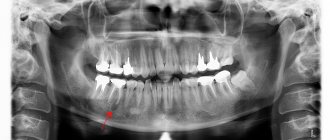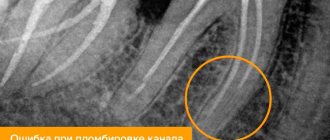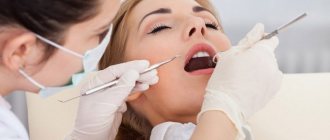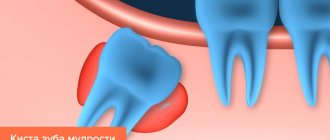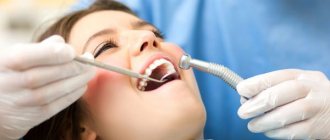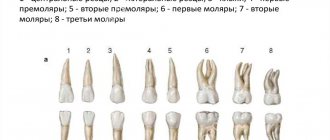Even adults are afraid of dentists. Because since childhood, we all have the stereotype “if it hurts, they’ll vomit.” And, it’s true, in the past doctors almost always resorted to a radical solution to the problem. The tooth that was causing discomfort was simply pulled out and a gold crown was placed in its place. But, like gold crowns, such methods have long since sunk into oblivion. Nowadays, dentists rarely resort to such serious interventions. Their main task is to save your tooth. There are several good reasons for this:
- After tooth extraction, the quality of food processing decreases. This is fraught with diseases of the gastrointestinal tract.
- An open gum is a direct path into the blood for a huge number of microbes. It is very difficult to care for an area without a tooth without damaging the gums. There will always be micro-wounds that sooner or later will lead to big problems.
- This ultimately makes your smile less aesthetically pleasing. The hole in the dentition will be very noticeable.
And since dentists are now trying their best to avoid removal, let’s figure out what methods they offer instead, and when you still have to “rip out” the problematic link.
Strengthening the root with copper
In people over 40, situations are quite common when a tooth simply breaks and only one root remains. The situation is usually further complicated by inflammation of the gums, because the tooth broke for a reason, but due to a lack of elements that ensure its strength. Usually in such cases the root is removed, but now doctors suggest trying the depophoresis procedure before removal.
Tooth depophoresis is a procedure for saturating the roots with copper. It reliably disinfects open canals and prevents their inflammation. Copper ions penetrate very deeply, into the most remote areas of the root and make them sterile. What is important is that the antiseptic effect of copper is not temporary. It allows you to protect the root from inflammation almost forever. Therefore, such a treated root, regardless of the degree of damage, can be used as a basis for building a new tooth or installing a crown.
Case 3. An instrument broke in the canal
We often come across cases when patients come to us who, during treatment in other clinics, have had a broken instrument in the root canal.
But the patient has no idea about this, since the attending physician himself did not notice it. When treating inflammation, in the absence of a microscope at hand, this remaining instrument interferes with the full treatment of the root canal. And the doctor, without seeing this instrument, cannot remove it, making full root canal treatment possible. Therefore, the patient is recommended to have the tooth removed. But is it necessary to remove the tooth in this case? - No.
How to do it right:
Contact a clinic that has a dental microscope in its arsenal.
Under high magnification, the doctor will be able to see the problematic root canal and see the remaining fragment of the instrument. Then carefully remove it, treat the root canal and eliminate inflammation. This allows the patient to save the tooth without having to remove it. Effective treatment of the above situations has become possible thanks to the use of dental microscopes in dental practice. Don’t skimp on your dental health; go to clinics that are equipped with microscopic treatment technologies.
We remove the problem, not the tooth
Very common problems are cysts or granulomas. They are a type of tumor that not only can be a source of pain, but also destroy bone tissue. Cysts become especially painful during a cold or after experiencing stress. It is then that the problem appears in all its glory on the X-ray.
The cause of the appearance of a cyst or granuloma can be an infection in the gum, most often due to careless tooth filling. The consequences of an untreated cyst can be anything. Since it is a source of infection, there is a high risk of infection entering the blood and spreading throughout the body. Such disorders are neurological in nature. Peri-, myo- and endocarditis may occur. Another common consequence is rheumatism of the joints. preventive cleaning and treatment should not be neglected
Previously, in order to clean out the cyst bubble, the tooth was actually removed. This makes it much easier to treat the gums and control the further course of the disease, but now, basically, three other, more progressive methods are offered.
- Cystectomy. During this procedure, the doctor cuts out the cyst and the damaged part of the root. The resulting hole is cleaned and filled with special medications, which should promote the growth of new bone tissue. If everything goes according to plan, the hole will heal and infection will no longer accumulate in it. Full recovery usually takes at least three weeks.
- Hemisection. If one of the tooth roots can no longer be saved, it is removed along with the cyst. After this, the hole is cleaned, treated with disinfectants and closed with a crown. This manipulation is simpler, so the functionality of the tooth is restored faster.
- Laser dialysis. This procedure is not carried out in all clinics, but it is quite effective. The cyst is “killed” using a laser beam that is injected directly into it. This also disinfects the root itself, eliminating the need for additional procedures.
If the granuloma is small, you can try the same tooth depophoresis . In 2-3 procedures you can defeat the infection at the root. It will be practically painless, but you need to strictly follow the procedure and properly care for your oral cavity between them.
What could be the consequences if left untreated?
Rotten teeth are not only bad breath and an unsightly smile, it is also the cause of the development of various diseases of internal organs. According to many clinicians, they cause complications in the form of heart pain, loss of appetite, migraine headaches, etc. Very often, pathological putrefactive processes in the oral cavity influence the occurrence of various diseases of the human skeletal system in particular and the musculoskeletal system in general (arthrosis, polyarthritis, etc.).
Putrefactive bacteria from affected teeth constantly enter the body, provoking various negative consequences: skin diseases, internal secretion diseases, kidney or heart failure, alopecia areata (baldness). And, most importantly, a person cannot stop this process on his own. You can only get rid of rotten teeth in a dental setting by seeking help from an experienced specialist in this field.
We delete and do not resist
Despite the rapid development of methods in dentistry, there are still situations when it is necessary to agree to tooth extraction. Moreover, most often the procedure must be carried out urgently in order to prevent the spread of infection and relieve pain. Unconditional indications for tooth extraction are:
- An acute form of osteomyelitis caused by a diseased tooth. This is a severe bone lesion that even affects the bone marrow. This state of affairs is dangerous for your health. The disease is accompanied by acute, unbearable pain and body temperature up to 40 degrees.
- Advanced periodontitis. The rotting of the root membrane is very difficult to stop if you try to save the tooth. In this case, the situation is dangerous because the rotting zone can increase and affect neighboring areas of the jaw.
A tooth can also be removed if it is the cause of other diseases: neuritis, phlegmon, lymphadenitis, sinusitis, etc. In addition, there are non-infectious indications for removal . The doctor may suggest removing a tooth if:
- It grows out of line and interferes with the formation of a correct bite. Sometimes timely tooth extraction allows a child to return a beautiful smile without any braces. Sometimes it is necessary to combine these types of treatment.
- It is located at the site of fusion of a broken jaw. If the jaw is injured, surgical intervention is required for its proper fusion. A tooth located at the fracture site may interfere with the process. Once the jaw has been restored, a new tooth can be grown in place of the hole if you deem it necessary for functional or aesthetic reasons.
Features of removing tooth fragments
After the walls of the crown are destroyed, the remainder of the root is removed using a special tool. The dentist performs surgery to remove all affected tissue and relieve inflammation. Such removal is complicated by the fact that tooth fragments do not have sufficient strength and can be destroyed during the extraction process. Therefore, the doctor first performs an x-ray (allows you to assess the condition of the root, its location and size, the presence of complications, etc.). Removing the fragments may require soft tissue detachment. When removing the root, gum excision and the use of local antiseptics, anti-inflammatory and other agents can additionally be performed.
Dentospas dentistry recommends performing dental treatment in a timely manner to avoid such complications. If the crown has already been destroyed, make an appointment with our surgeon for an examination and consultation.
Caring for your oral cavity after surgery
The speed of wound healing depends on how you follow the rules of hygiene. Also, proper care allows you to avoid infection of the hole and aggravation of problems.
- Do not eat food for the next 4 hours after the procedure. The first time, try to eat something soft: cream soup or puree. Under no circumstances should you eat hot food. The same goes for drinks.
- Don't touch the hole. Neither with language, nor with any objects. For effective healing, it is very important to maintain the integrity of the blood crust that has formed on the wound.
- You won't be able to brush your teeth for a few days. To keep your mouth clean, rinse your mouth with a baking soda solution (half a teaspoon per glass of water). A decoction of chamomile, calendula or oak bark also disinfects and promotes healing.
- During the first weeks, brush your teeth only with a soft or ultra-soft toothbrush so as not to irritate your gums. Use the toothpaste recommended by your doctor - it will promote healing.
- For two to three days after surgery, try to refrain from smoking, drinking alcohol, and using the sauna. All this can negatively affect the condition of the crust while it has not yet hardened.
Full recovery will occur in 2-3 weeks, then you can return to your normal rhythm of life. In complex surgeries where you have to wait for bone tissue to grow, recovery may take up to 14 weeks . But still, after the first three, you will be able to eat normally, and your gums will not be sensitive to temperature.
Why do they appear?
Contrary to popular belief that a rotten tooth is the result of insufficient oral hygiene, as well as excessive and uncontrolled consumption of sweets, upon closer examination the situation does not look so clear. Of course, if you don’t brush your teeth twice a day, don’t wash your mouth with rinses or plain water after meals, and neglect to use floss, you can ruin your smile.
But besides this, rotten teeth are the result of many problems, including:
- Various diseases of the gums and internal organs of the digestive tract;
- Poor environmental conditions, including the use of water unsuitable for drinking;
- Genetic predisposition;
- Unhealthy lifestyle – drug use, alcohol use, and smoking;
- Poor nutritional culture, including abuse of sweet and sour foods;
- All kinds of vitamin deficiencies and insufficient amounts of minerals in the diet.
As you can see, the cause of this disease is the result of a number of factors, both internal and external. Therefore, the problem needs to be solved comprehensively, starting from a comprehensive diagnosis of the condition of internal organs and sanitation of the oral cavity, ending with drug treatment of identified pathologies at the systemic level.
Causes of rotten teeth
In the early stages, caries does not make itself felt. No pain, nothing at all. However, over time, tooth sensitivity to cold, hot, sweet or sour increases. This is because the enamel is destroyed and weakened. Dental treatment should begin immediately, because if you start treating caries at its first manifestation, then the chances of saving the tooth increase sharply. When caries gradually reaches the nerve, the person will begin to experience severe pain, which will force him to see a dentist.
It is very easy to identify deep caries by external signs. The tooth will begin to change color from white to yellow, from yellow to brown. The tooth crumbles more and more, which subsequently makes it possible to see blackened, dead tooth tissue. If the crown of a tooth is almost completely destroyed, it will be almost impossible to restore it.
